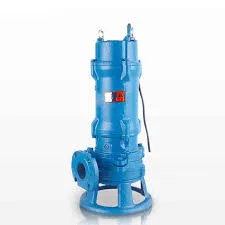English
- Afrikaans
- Albanian
- Amharic
- Arabic
- Armenian
- Azerbaijani
- Basque
- Belarusian
- Bengali
- Bosnian
- Bulgarian
- Catalan
- Cebuano
- Corsican
- Croatian
- Czech
- Danish
- Dutch
- English
- Esperanto
- Estonian
- Finnish
- French
- Frisian
- Galician
- Georgian
- German
- Greek
- Gujarati
- Haitian Creole
- hausa
- hawaiian
- Hebrew
- Hindi
- Miao
- Hungarian
- Icelandic
- igbo
- Indonesian
- irish
- Italian
- Japanese
- Javanese
- Kannada
- kazakh
- Khmer
- Rwandese
- Korean
- Kurdish
- Kyrgyz
- Lao
- Latin
- Latvian
- Lithuanian
- Luxembourgish
- Macedonian
- Malgashi
- Malay
- Malayalam
- Maltese
- Maori
- Marathi
- Mongolian
- Myanmar
- Nepali
- Norwegian
- Norwegian
- Occitan
- Pashto
- Persian
- Polish
- Portuguese
- Punjabi
- Romanian
- Russian
- Samoan
- Scottish Gaelic
- Serbian
- Sesotho
- Shona
- Sindhi
- Sinhala
- Slovak
- Slovenian
- Somali
- Spanish
- Sundanese
- Swahili
- Swedish
- Tagalog
- Tajik
- Tamil
- Tatar
- Telugu
- Thai
- Turkish
- Turkmen
- Ukrainian
- Urdu
- Uighur
- Uzbek
- Vietnamese
- Welsh
- Bantu
- Yiddish
- Yoruba
- Zulu
Telephone: +86 13120555503
Email: frank@cypump.com
Oct . 13, 2024 08:23 Back to list
waste pump for basement bathroom
Waste Pumps for Basement Bathrooms An Essential Guide
When it comes to designing a basement bathroom, one of the key challenges homeowners face is the installation of a waste pump. Basement bathrooms are often situated below the existing sewer line, which can complicate the drainage process. This is where waste pumps come into play, providing an efficient and effective solution for managing wastewater in these unique spaces.
A waste pump, sometimes referred to as a macerating pump, plays a critical role in the wastewater management system in a basement bathroom. Its primary function is to grind up solid waste and toilet paper into a slurry before pumping it upward into the main sewer line. This process is essential because most gravity-fed systems expect waste to flow downward, which is not possible in a basement situated below the sewer line.
There are two main types of waste pumps typically used in basement bathrooms standard sewage ejector pumps and macerating pumps
. The choice between these two will depend on the specific needs of your bathroom setup.Sewage Ejector Pumps are designed to handle solid waste and large volumes of water. They are robust and capable of dealing with higher flow rates, making them ideal for bathrooms that will experience heavy use or that include multiple plumbing fixtures, such as toilets, sinks, and showers. Installation typically involves creating a pit in the basement floor where the pump will be housed. When wastewater enters the pit, the pump activates, efficiently moving the waste to the sewer line.
waste pump for basement bathroom

On the other hand, Macerating Pumps come equipped with blades that chop solid waste into a fine slurry, which allows for easier movement through smaller pipes. This is particularly advantageous in renovations where digging up the foundation to install traditional plumbing is not feasible or desirable. Macerating systems can often be installed with smaller-diameter pipes, making them less invasive and cost-effective.
Installing a Waste Pump Key Considerations When planning the installation of a waste pump in your basement bathroom, there are several factors to consider. First, it's essential to determine the location of your plumbing fixtures and the ideal position for the waste pump. Proximity to the fixtures can help minimize the length of the discharge line and reduce potential clogging.
Additionally, consider the electrical requirements for the pump. Most waste pumps require a standard 120-volt outlet, and it's crucial to ensure that there is a reliable power source nearby. Backup power options, such as battery backups, may also be worth considering for added security against power outages.
Regular maintenance is another important aspect to keep in mind. While waste pumps are generally low-maintenance, homeowners should periodically check for clogs or inspect the electrical components to ensure everything is functioning correctly.
In conclusion, a waste pump is an invaluable addition to any basement bathroom, allowing homeowners to enjoy the convenience of a fully functioning restroom in a space that otherwise presents drainage challenges. Whether opting for a sewage ejector pump or a macerating pump, understanding the specific needs and functionalities of these systems will help ensure a successful installation and long-term satisfaction with your basement remodel. With the right planning and installation, a basement bathroom can be both functional and comfortable, proving that no space should be left without essential amenities.
-
Horizontal Split Case Pump with GPT-4 Turbo | High Efficiency
NewsAug.01,2025
-
ISG Series Pipeline Pump - Chi Yuan Pumps | High Efficiency, Durable Design
NewsAug.01,2025
-
Advanced Flue Gas Desulfurization Pump with GPT-4 Turbo | Durable & Efficient
NewsJul.31,2025
-
ISG Series Vertical Pipeline Pump - Chi Yuan Pumps | Advanced Hydraulic Design&Durable Construction
NewsJul.31,2025
-
ISG Series Vertical Pipeline Pump - Chi Yuan Pumps | Energy Efficient & Low Noise
NewsJul.31,2025
-
pipeline pump - Chi Yuan Pumps Co., LTD.|High Efficiency&Low Noise
NewsJul.31,2025










